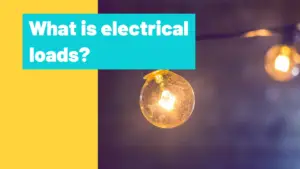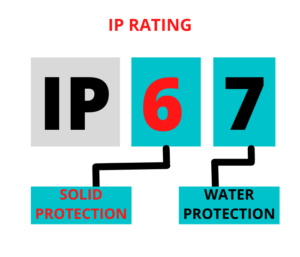Alternating Current (AC) is a type of electrical current in which the flow of electric charge periodically reverses direction. This contrasts with Direct Current (DC), where the electric charge flows in only one direction.
AC (alternating current) is the type of electricity commonly used in homes, businesses, and many other applications. Its voltage changes in a smooth, wave-like pattern called a sinusoidal waveform, and the current periodically reverses direction.
This reversal offers key benefits, like making it easy to change voltage levels with transformers and allowing electricity to travel long distances with less energy loss. AC power is versatile, as it can be converted to different voltages, making it suitable for a wide range of devices.
In most countries, AC operates at a standard frequency of 50 or 60 hertz (Hz), meaning the current changes direction 50 or 60 times per second. It’s the electricity that powers most of the appliances and devices we use every day.
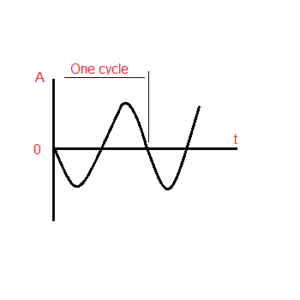
Table of Contents
Advantages of Alternating current
fficient Transmission
- Why Voltage Matters: Electrical power is transmitted more efficiently at high voltages. When voltage is increased, the current required to deliver the same amount of power decreases. Lower current means less energy is lost as heat in the transmission lines.
- How AC Helps: AC can easily be converted to higher or lower voltages using transformers. Transformers only work with AC, not DC. This capability allows power plants to step up the voltage for long-distance transmission and then step it down for safe use in homes and businesses.
- Result: This makes AC the most practical choice for delivering electricity across cities, countries, and even continents.
Compatibility with Generators
- How Generators Work: Generators in power plants naturally produce AC electricity due to their design. They create electricity by spinning a coil of wire inside a magnetic field, which induces a current that naturally alternates direction.
- Why AC is Ideal: Since AC is generated directly, there’s no need for additional conversion at the power plant, making the process efficient and cost-effective. DC generation, on the other hand, would require additional equipment and energy to produce.
Universal Use
- Household Devices: Most electrical appliances, such as lights, fans, refrigerators, and televisions, are designed to operate on AC. This is because the electricity supplied to homes and businesses is AC.
- Industrial Applications: Many industrial machines and tools also rely on AC, including large motors and heaters, because it can deliver high power efficiently.
- Versatility: AC’s ability to be easily converted to different voltages makes it adaptable for diverse applications, from powering delicate electronics to running heavy machinery.
Why AC Dominates:
These advantages make AC the backbone of modern power systems, providing an efficient, reliable, and flexible way to meet the energy needs of homes, businesses, and industries worldwide.
For more information read my article about AC generators.
Alternating current formula
As mentioned above AC power generation is divided in two. 1 and 3 phases system.
The current formula for single-phase loads:
I = P / (V * I * cos Φ)
The current formula for 3 phases loads:
I = P / (√3 * V * I * cos Φ)
How to measure AC current using a multimeter?
A multimeter is an instrument that is used for electric voltage, resistance, current, and some more measurements.
To use it for alternating current calculation simply select alternating current and connect the device in series with the load.
A better way to measure current is to use a current clamp meter which needs no series connection. just put the device core around the cable and take the reading.
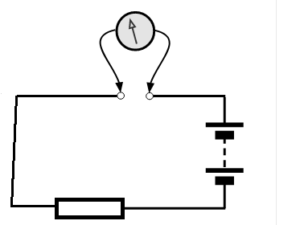
What is Direct Current?
Direct Current (DC) is a type of electric current in which the flow of electric charge (typically electrons) occurs in one direction, and the magnitude and direction of the current remain relatively constant over time.
In a DC circuit, the voltage and current have a steady and unidirectional flow. The voltage in a DC circuit does not change polarity, which means it maintains a constant positive or negative value.
Key characteristics of DC include:
-
Unidirectional Flow: In a DC circuit, electrons flow in one consistent direction from the negative terminal to the positive terminal of a power source, such as a battery or a rectified power supply.
-
Constant Magnitude: The magnitude of the current and voltage in a DC circuit remains relatively constant. This stability is suitable for devices that require a steady and uninterrupted power supply.
-
Simple Circuits: DC circuits are generally simpler in design compared to AC circuits, as there is no need to account for changing voltage polarity and phase.
DC is commonly used in various applications, including:
-
Batteries: Most batteries provide DC power, which is used to power portable devices like smartphones, laptops, and flashlights.
-
Electrochemical Processes: Many chemical and electroplating processes require a constant and consistent flow of DC to function properly.
-
Electronic Devices: Many electronic devices, such as computers and televisions, use DC power internally. AC power is converted to DC through power supplies or adapters.
-
Automotive Systems: The electrical systems in vehicles, including lighting and the starter motor, typically operate on DC power supplied by the car’s battery.
-
Photovoltaic (Solar) Systems: Solar panels generate DC electricity, which is often converted to AC for use in homes and the power grid.
DC has its advantages in terms of simplicity and compatibility with many electronic devices. However, it is less efficient for long-distance power transmission and not as suitable for some types of power distribution and electrical systems as Alternating Current (AC).
In many cases, AC power is used for electricity distribution, while DC power is converted from or to AC for various applications.
DC current application and uses
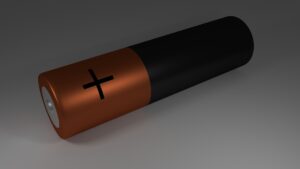
Direct current (DC) has a number of important applications in various fields.
While its usage has somewhat diminished in certain areas in favor of alternating current (AC), it still remains relevant and crucial in a number of applications due to its unique characteristics. Some important applications and uses of DC current include:
-
Electronics: DC is fundamental to the operation of electronic devices. Many electronic components and circuits, such as transistors and integrated circuits, require DC to function properly. Batteries, which are a common source of DC power, are used to power a wide array of portable electronic devices such as smartphones, laptops, and handheld gaming devices.
-
Telecommunications: Various components of telecommunication systems, such as mobile phones, rely on DC power sources. Even though signals are often transmitted using AC, the internal components of the devices are typically powered by DC.
-
Automotive Industry: The automotive industry heavily relies on DC power for various applications. Batteries provide the necessary DC power to start the engine, power the lights, and operate other electrical components in vehicles. Additionally, electric and hybrid vehicles operate using high-voltage DC power from their battery packs.
-
Photovoltaic Systems: Solar cells produce DC electricity, which is then stored in batteries or converted to AC through inverters for use in homes and businesses. Photovoltaic systems are an important source of renewable energy and contribute significantly to reducing dependence on traditional energy sources.
-
Railway and Transportation: Many railway systems and certain forms of public transportation use DC power. For instance, subway systems, trolleybuses, and electric locomotives often use DC electric power for their operations.
-
Industrial Applications: Some industrial processes, particularly those that require a consistent and stable power supply, utilize DC. For example, electroplating, metal refining, and certain types of welding rely on direct current.
-
Data Centers: DC power distribution is gaining traction in data centers as it can be more energy-efficient for certain operations. Data centers utilize DC power for its stability and efficiency in managing large amounts of computer hardware and servers.
-
Battery Charging: Charging batteries, such as those in smartphones, laptops, and electric vehicles, typically involves DC current. This is an essential application, especially with the increasing use of portable electronic devices and the growing demand for electric vehicles.
While AC power is more commonly used for long-distance power transmission due to its ability to be easily converted to different voltage levels, DC power remains essential for many specific applications where its unique characteristics are advantageous.
DC Current Formula
The formula for calculating the current (I) in a direct current (DC) circuit can be determined using Ohm’s law.
Ohm’s law states that the current flowing through a conductor between two points is directly proportional to the voltage across the two points and inversely proportional to the resistance between them. The formula is:
I = P / V
where:
- is the current in amperes (A).
- is the voltage in volts (V).
- is the resistance in ohms (Ω).
Here’s an example:
Let’s say we have a DC circuit with a voltage of 12 volts (V) and a resistance of 4 ohms (). Using Ohm’s law, we can find the current flowing through the circuit:
I = 12/ 4 =
Why is residential power not DC?
Residential power is not DC (Direct Current) because AC (Alternating Current) offers several practical and economic advantages that make it a better choice for homes and businesses. Here’s why:
Efficient Transmission Over Long Distances
AC Advantage: AC power can be easily transformed to higher voltages for long-distance transmission and then stepped down for safe residential use. High voltage reduces energy loss in transmission lines.
- DC Limitation: Transforming DC voltage to higher or lower levels is complex and inefficient. Specialized equipment like converters is required, which adds cost and complexity.
Compatibility with Generators
- AC Advantage: Power plants generate electricity as AC because it is more efficient to produce with spinning generators, which naturally produce an alternating current.
- DC Limitation: Converting AC from generators to DC for distribution would require additional equipment, increasing costs and reducing overall system efficiency.
Simplicity and Cost of Equipment
- AC Advantage: Devices like transformers, which work only with AC, are simple, efficient, and inexpensive, making it practical to distribute AC power.
- DC Limitation: Managing DC power, especially at varying voltages, requires more expensive and complex technology, such as inverters and converters.
Appliance Compatibility
- AC Advantage: Most household appliances and devices are designed to run on AC, as it is the standard supply. Electric motors, which power fans, refrigerators, and washing machines, work more efficiently with AC.
- DC Limitation: While some modern electronics use DC internally, they still rely on AC-to-DC converters (power adapters) because residential supply is AC.
Historical Decisions
- Edison’s DC vs. Tesla’s AC: In the late 19th century, the “War of Currents” between Thomas Edison (DC) and Nikola Tesla (AC) ended with AC being chosen for the electric grid. This decision was driven by AC’s ability to efficiently transmit power over long distances and adapt to different voltage levels.
Conclusion
AC power became the standard for residential use because it is more practical, cost-effective, and versatile for large-scale power generation, transmission, and distribution. While DC has applications in modern electronics and batteries, it lacks the scalability and efficiency needed for residential power systems.
For more information about AC & DC power read my detailed article, here.
Does the DC power source have a power factor?
No, a DC (Direct Current) power source does not have a power factor. Here’s why:
Understanding Power Factor
- Power factor is a concept used in AC (Alternating Current) systems to measure the efficiency of power usage. It is defined as the ratio of real power (used to perform work) to apparent power (total power supplied).
- In AC systems, power factor accounts for the phase difference between voltage and current caused by inductive or capacitive loads, which can lead to reactive power.
Why DC Doesn’t Have a Power Factor
- No Phase Angle:
In DC circuits, the voltage and current are constant and do not alternate, so there is no phase angle between them. Power factor is only relevant when there is a phase difference, which occurs in AC systems. - No Reactive Power:
DC systems do not have reactive components like inductors or capacitors that store and release energy, as AC systems do. Without reactive power, there’s no need to measure the ratio of real power to apparent power. - Simpler Power Calculation:
In DC systems, power is calculated simply as P=V×IP = V \times IP=V×I, where VVV is voltage and III is current. There is no distinction between real and apparent power, so the concept of power factor is unnecessary.
For more information about Power Factor, read my article here.
Don’t Leave Empty-Handed!
Install my Free Android App on Google Play:
Electrical Cables Most Common Tables “Cables Tables”
And, my Electrical Calculations App “Fast Electrical Calculator”
Discover more great content by subscribing to My channel
Looking to stay ahead of the game in the world of electrical engineering? Subscribe to my YouTube channel and gain access to exclusive content you won’t find anywhere else!
The staff I recommend
(Amazon Affiliate Links to products I believe are high quality):
- Economy 120 Volt/60Hz AC Power Source – Step-Down Voltage & Frequency Converters 1800W
- UNI-T Digital Multimeter Tester UT139C
- 50-Amp Extension Cord for RV “100ft”
- Voltage Stabilizer 110/220v
- Hair Dryer “best selling“
- TOSHIBA EM131A5C-BS Countertop Microwave Ovens
Disclaimer: This contains affiliate links to Amazon products. I may earn a commission for purchases made through these links.

